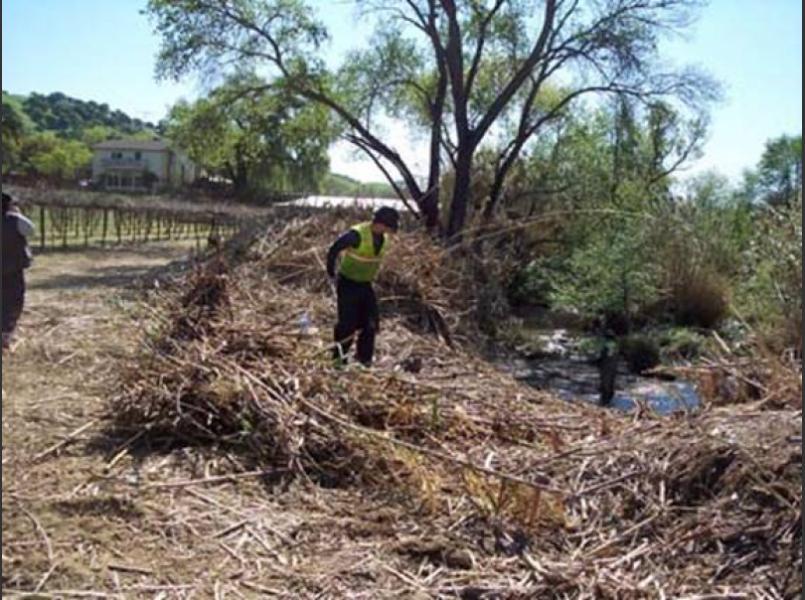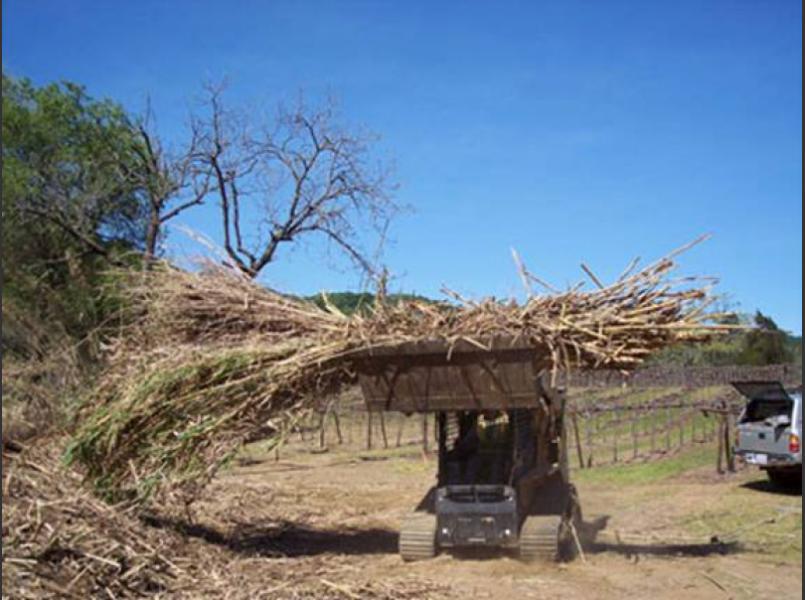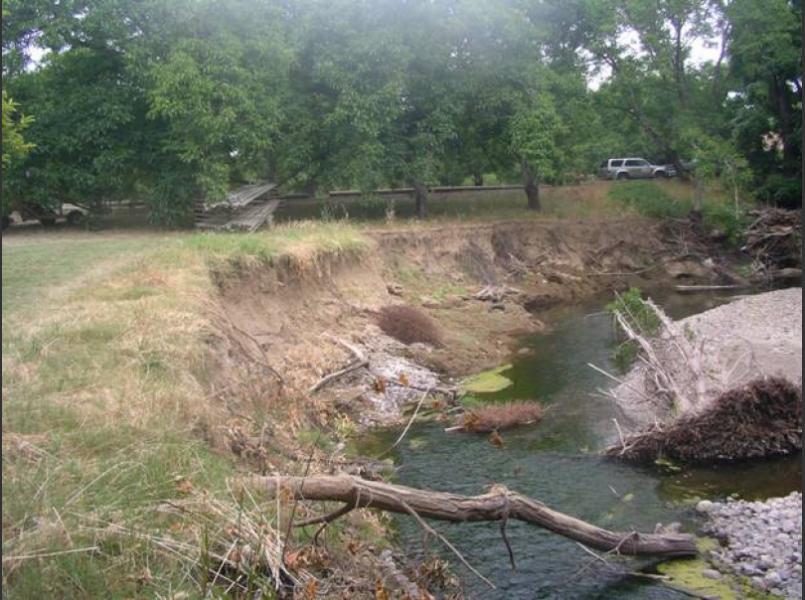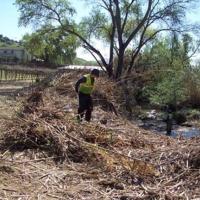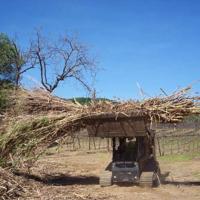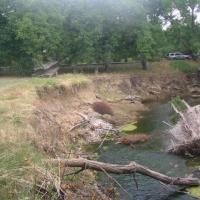Suisun Creek Invasive Non-Native Arundo Removal and Native Plant Revegetation Project
The California Land Stewardship Institute, in cooperation with local Fish Friendly Farming participants, the California Sportfishing Protection Alliance, the Center for Social and Environmental Stewardship (formerly Circuit Rider Productions), and Shelterbelt Builders, has been removing giant reed, or Arundo donax, from Suisun Creek starting below Lake Curry. Giant reed clumps have been mapped using high resolution aerial photography. The clumps were found distributed along about 9 miles of Suisun Creek, from Lake Curry to the tidal zone. The cumulative total for the clumps was found to be about 6.5 acres. Suisun Creek has been identified as one of the best streams for steelhead habitat in the San Francisco Bay area; therefore, restoring a healthy riparian corridor is of utmost importance.
Since giant reed spreads downstream, the goal of the eradication program has been to work from the clump farthest upstream and move down Suisun Creek. Stands from Lake Curry to the Napa-Solano County line (XX miles) have already been removed and will be revegetated with native riparian plants. Landowners downstream of these sites have expressed strong interest in removing giant reed on their properties, and plans are underway to work collaboratively with these landowners to eradicate this invasive plant from Suisun Creek. Funding for this project is provided by the California State Water Resources Control Board, the Department of Conservation, the Watershed Program of the CALFED Bay-Delta Program, the San Francisco Foundation Bay Fund, and the landowners of Suisun Creek.
More information on Suisun Creek and related projects can be found at www.calstewlandinst.org/suisuncreek. (site under development)
Suisun Creek Bank Stabilization Project
The project site lies along Suisun Creek approximately four miles northeast of Fairfield, CA. Historically, Suisun Creek enjoyed a broad riparian area with frequent flooding, producing the rich valley soils now under agricultural production. The stream channel probably moved across the alluvial valley, as is common in such settings. With the advent of agricultural production and residential construction, lateral migration of the stream channel becomes problematic.
The flood flows of January 2006 impacted the stream banks at a large bend in the corridor, and now homes and other structures are threatened by further lateral erosion of the stream.
This project will slow the lateral erosion by installing rock and stream barbs to deflect strong erosive currents from the base of the steep, eroding bank and by installing native trees. The recommendations will balance residential, agricultural and fishery aspects of resource protection. Funding for this project is provided by the California State Water Resources Control Board and the Department of Conservation.


